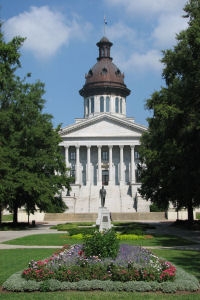Census of Governments History
Census of Governments History
The Census Act of 1840 provided for the collection of statistics pertaining to "the pursuits, industry, education, and resources of the country." As a result, the 1840 census was the first in which governments were asked about the numbers and kinds of schools and pupils.
In 1850, collection expanded and included a separate "social statistics" schedule. U.S. marshals and their assistants completed these schedules using data from public records, reports, and information supplied by officials for each district, town, city, township, ward, or parish. Information collected included the aggregate assessed values of real and personal property, the kinds and amounts of annual state and substate taxes and how they were paid, and the number and kinds of schools and details on their revenues.

Haston Free Public Library, North Brookfield, MA, ca. 1905.
Photo courtesy of the North Brookfield, MA, Historical Society.
While the U.S. government appointed and trained supervisors and enumerators to conduct the 1880 census, governmental statistics were collected by experts who dealt with local officials via correspondence from Washington, DC. Inquiries included the number of schools, details about cities--including sewage and drainage, utilities, and public services--and 105 additional inquiries that assessed governments' financial conditions.
A governments census was not conducted at the time of the 1900 decennial census, but one of the first tasks of the newly established U.S. Census Bureau was the 1902 Census of Governments. The 1902 Census of Governments collected data on federal, state, and local government revenues and expenditures, assessed valuations, tax levies, and debt.
Following 1902, the Census Bureau conducted censuses of governments in 1913, 1922, 1932, and 1942.
The U.S. Census Bureau has conducted a census of governments every 5 years, in years ending in "2" and "7" since 1957. This census, authorized by Title 13, U.S. Code, requires participation of all state and local governments in the United States, including counties, cities, townships, special districts, and school districts.Since 1957, the census of governments has focused on four major areas of data collection:
- Governmental organization--includes the number, characteristics, and descriptions of local governments (by type) and data on popularly elected officials.
- Taxable--includes property values by major property use categories.
- Governmental employment--includes the number of public employees and payrolls; extent of employee organizations; labor management; and governments' costs for employee benefits.
- Government finances--includes the collection of revenue data by source and type; expenditure by function; indebtedness; and cash and security holdings.
For more information about the history of the census of governments download the following publications:





